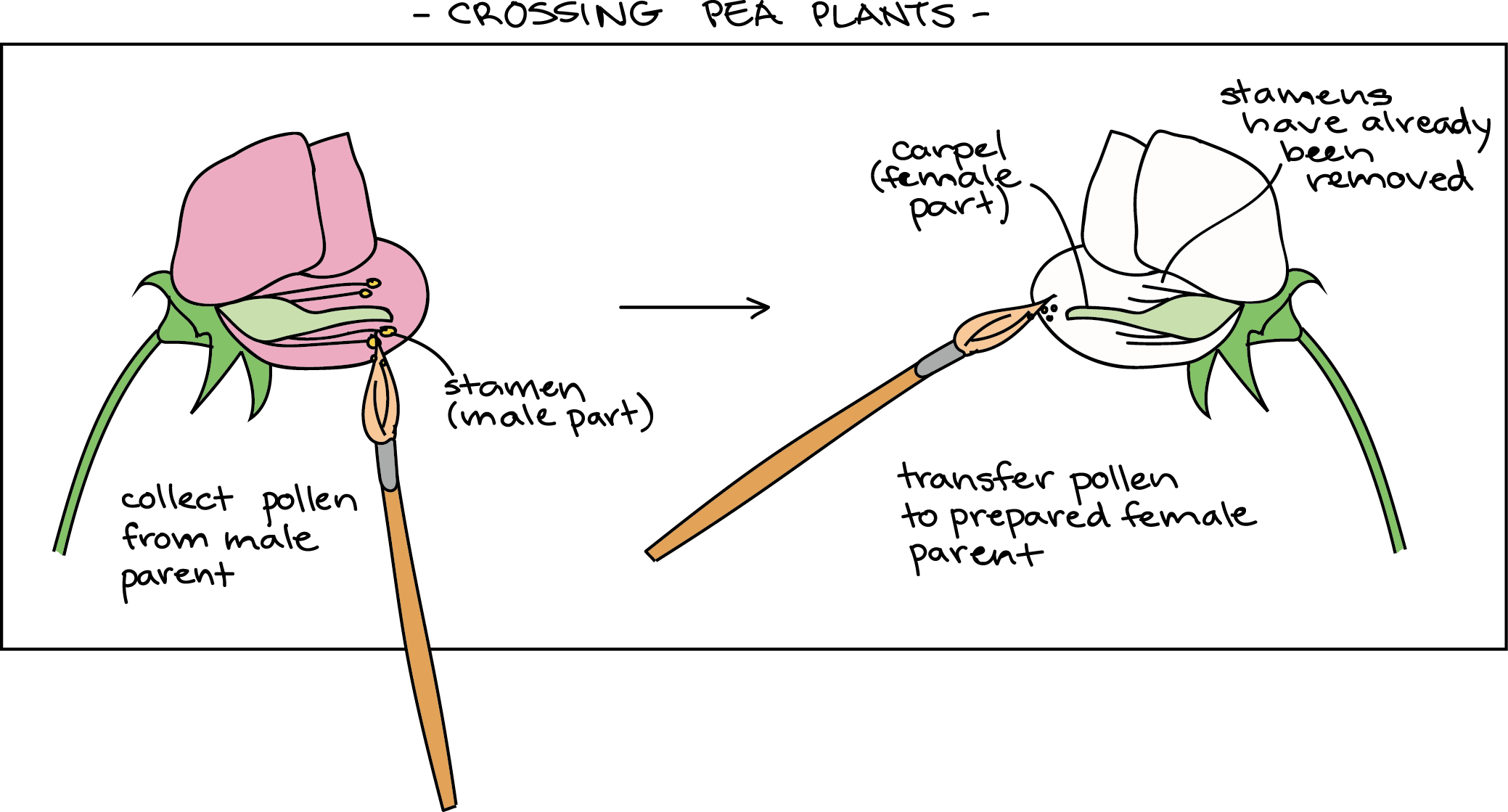
Why Did Mendel Study Pea Plants?
Gregor Mendel, known as the father of genetics, conducted groundbreaking experiments in the mid-19th century that laid the foundation for our understanding of heredity. His choice of the common garden pea (Pisum sativum) for his studies was strategic and pivotal to his discoveries. This article explores the reasons behind Mendel’s selection of pea plants, the experiments he conducted, and the implications of his findings in the field of genetics.
Historical Context
Mendel’s experiments took place during a time when the prevailing theory of inheritance was the blending theory, which posited that offspring were a blend of parental traits. Mendel, however, sought to understand the underlying principles of heredity, which led him to conduct meticulous experiments using pea plants.
Characteristics of Pea Plants
Mendel selected pea plants for several reasons:
- Rapid Growth: Pea plants grow quickly, allowing Mendel to observe multiple generations in a relatively short time. This rapid life cycle facilitated the collection of data over several years.
- Ease of Cultivation: Peas are easy to cultivate and can be grown in a small garden. Mendel conducted his experiments in the monastery garden, where he had access to a controlled environment.
- Distinct Traits: Pea plants exhibit a range of easily observable traits, such as seed shape (round or wrinkled), flower color (purple or white), and pod shape (inflated or constricted). These traits had clear, binary outcomes, making it easier to analyze inheritance patterns.
- Self-Pollination and Cross-Pollination: Pea plants can self-pollinate, which means they can fertilize themselves, ensuring genetic purity. However, they can also be cross-pollinated, allowing Mendel to control the breeding process and create hybrids.
- Pure Breeding Lines: Mendel was able to establish pure breeding lines for each trait, ensuring that the traits remained consistent across generations. This was crucial for his experiments, as it allowed him to observe how traits were passed down.
Mendel’s Experiments
Mendel conducted a series of experiments over eight years, focusing on seven traits in pea plants. He carefully recorded the results of his crosses and analyzed the patterns of inheritance. His methodology included:
- Monohybrid Crosses: Mendel began with monohybrid crosses, focusing on one trait at a time. For example, he crossed pure-breeding tall plants with pure-breeding short plants. The first generation (F1) produced only tall plants, indicating that the tall trait was dominant.
- F2 Generation: When Mendel allowed the F1 generation to self-fertilize, he observed the F2 generation, which exhibited a 3:1 ratio of tall to short plants. This led him to formulate the Law of Segregation, which states that alleles segregate independently during gamete formation.
- Dihybrid Crosses: Mendel later conducted dihybrid crosses, examining two traits simultaneously. For instance, he crossed plants that were pure for both seed shape and color. The resulting F2 generation displayed a phenotypic ratio of 9:3:3:1, leading to the Law of Independent Assortment.
Key Findings
Mendel’s experiments yielded three fundamental principles of inheritance:
- Law of Segregation: Each individual carries two alleles for each trait, which segregate during gamete formation, resulting in offspring inheriting one allele from each parent.
- Law of Independent Assortment: Alleles for different traits segregate independently of one another during gamete formation, leading to genetic variation.
- Law of Dominance: In cases where two different alleles are present, one allele may mask the expression of the other, resulting in a dominant phenotype.
Implications of Mendel’s Work
Mendel’s work went largely unrecognized during his lifetime, but it laid the groundwork for modern genetics. His principles of inheritance are fundamental to the study of heredity in all living organisms, including humans. The concepts of dominant and recessive traits, as well as the mechanisms of genetic variation, are integral to fields such as agriculture, medicine, and evolutionary biology.
Conclusion
Gregor Mendel’s choice to study pea plants was driven by practical considerations and the unique characteristics of these plants. His meticulous experiments revealed the basic principles of heredity that continue to influence genetic research today. By understanding why Mendel chose pea plants, we gain insight into the origins of genetics and the importance of experimental design in scientific discovery.
FAQ
- Why did Mendel choose pea plants for his experiments?
Mendel chose pea plants because they grow quickly, are easy to breed, and exhibit distinct traits that can be easily observed and measured. - What were the key traits Mendel studied in pea plants?
Mendel studied seven traits in pea plants, including seed shape (round or wrinkled), flower color (purple or white), and pod shape (inflated or constricted). - What are the three laws of inheritance proposed by Mendel?
The three laws are the Law of Segregation, the Law of Independent Assortment, and the Law of Dominance. - How did Mendel control the breeding of pea plants?
Mendel controlled breeding by using techniques such as self-pollination and cross-pollination, allowing him to create hybrids and pure breeding lines. - What impact did Mendel’s work have on modern genetics?
Mendel’s discoveries laid the foundation for the field of genetics, influencing our understanding of heredity, genetic variation, and the principles governing inheritance.
References
| Characteristic | Description |
|---|---|
| Growth Rate | Pea plants grow quickly, allowing for multiple generations to be studied in a short time. |
| Ease of Cultivation | Peas can be easily cultivated in small spaces, making them practical for experiments. |
| Observable Traits | Pea plants exhibit clear traits, such as color and shape, which are easy to measure. |
| Pollination Methods | Peas can self-pollinate or be cross-pollinated, allowing for controlled breeding. |
| Pure Breeding Lines | Mendel established pure lines for each trait, ensuring consistent results across generations. |
For more detailed information, you can refer to the following link: Wikipedia: Gregor Mendel.


